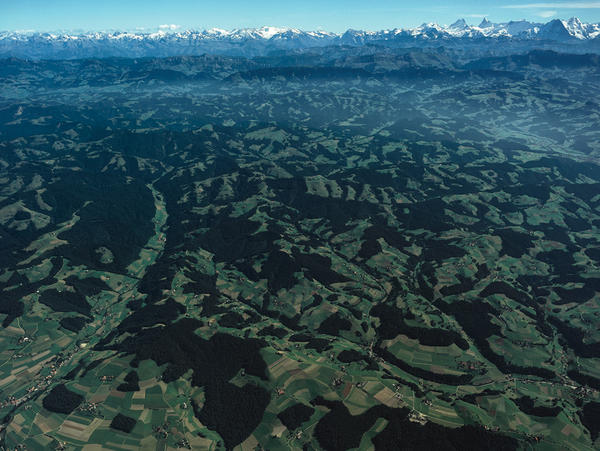Achtung: die Landschaft II

Rethinking the limit between ‘unbuilt’ territories and urbanization
in the Mittelland
In 1955 Max Frisch, Lucius Burckhardt and Markus Kutter published Achtung: Die Schweiz, a warning about the increasing sprawl throughout the Swiss landscape and a plea for a new and more controlled level of urbanity. Fifty-eight years later, the level of alarm against the increasing levels of urban sprawl has not diminished and yet single-family houses and low-density settlements still continue to cover the Swiss landscape. Openly alluding to the book of 1955, Studio Basel’s research project Achtung: die Landschaft attempts at offering a different yet radical alternative to the problems of land, landscape and resources consumption that contemporary forms of urbanization imply. Instead of new dense settlements built outside of the existing cities as advanced in the project of 1955, we propose to shift attention towards landschaft –land, landscape and the entire un-built territory as the deliberate choice to be operative within the constraints of a modern democracy. The research hypothesis is that it is the space of the limit, the physical space of delimitation and separation between different conditions and the very place able to inform the experience of architecture, that will be able to reintroduce an idea of place within an otherwise undifferentiated and generic urban condition. The research focuses on various portions of the Swiss urbanized territory and or each of these territories, the understanding of both the physical and the socio-economic conditions of the un-built becomes the lens through which to formulate an alternative vision for the future of the Swiss territory.
As depicted in the book Switzerland. An Urban Portrait (ETH Studio Basel, 2005) and differently from other European sprawling territories, the Mittelland is far from being an uninterrupted field of urbanization. It could rather be described as the result of the alternation of three large ‘quite zones’ –blank spaces of relatively large expanse– with the growing urban networks and metropolitan regions separating them. The Napf is one of these ‘un-built’ reservoirs, a large area whose rural condition establishes a sharp contrast to the uninterrupted economic and urban growth that surrounds it. Six projects built up on this potentially fruitful dichotomy, revealing various possible approaches for the transformation of the surrounding urban networks, of agrarian landscapes in transition and of internationally connected tourism hubs.

PEOPLE: PROF. JACQUES HERZOG, PROF. PIERRE DE MEURON, CHARLOTTE VON MOOS, LISA EULER, MARTINO TATTARA

